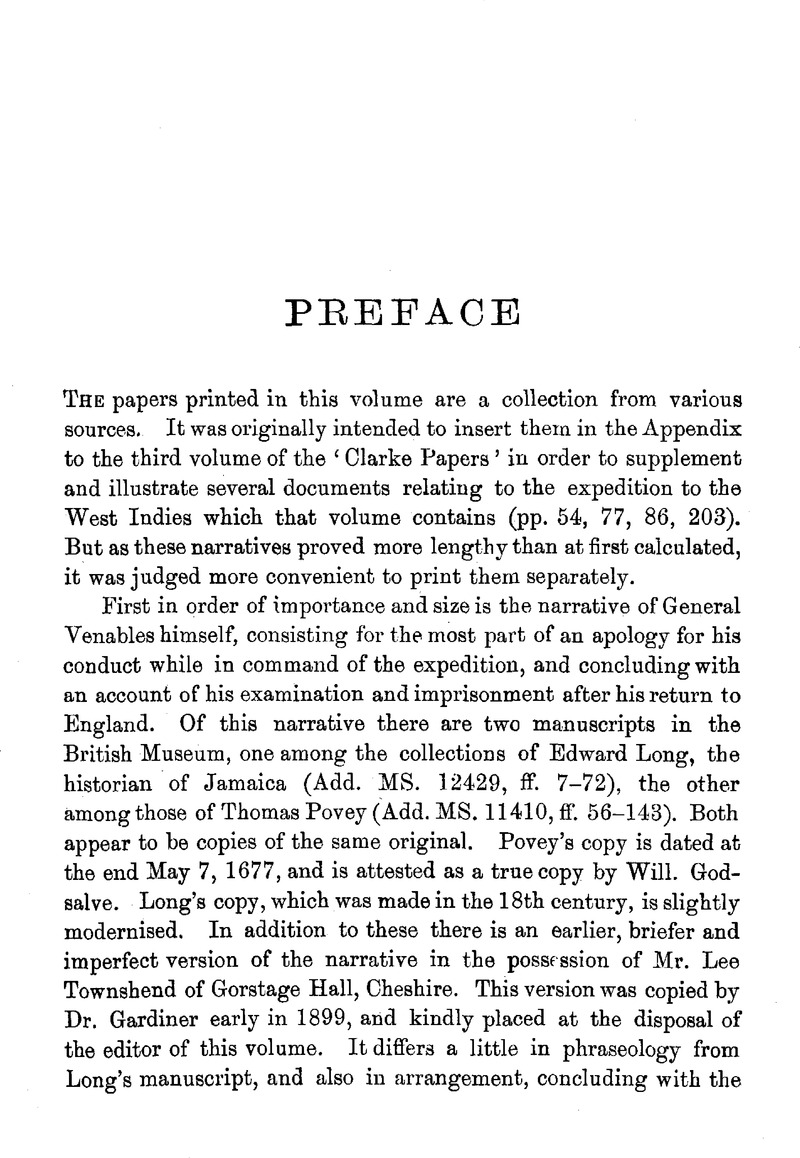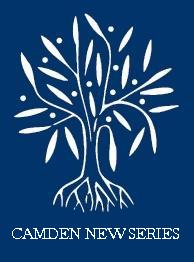No CrossRef data available.
Article contents
Abstract

- Type
- Preface
- Information
- Copyright
- Copyright © Royal Historical Society 1900
References
page vi note 1 Written by Venables, and first publishe in 1662, with an epistle from Izaak Walton to the author.
page ix note 1 Penn's commission is there dated Oct. 9, which is possibly an error for Dec. 9. His instructions were certainly not passed before Dec. 9. See Disbrowe's letter to Thurloe, Dec. 7, 1654, suggesting amendments in them. Thurloe, iii. 17.
page xvi note 1 It is evident that the ill will which existed between their commanders spread to the soldiers and sailors, and that the sailors expressed open contempt for the soldiers and their leader (pp. 32, 56, 68, 101; cf. Thurloe, iii. 507; Memorials of Sir William Penn, ii. 105.
page xxviii note 1 I. S. boldly says 1,300. Harleian Miscellany, iii. 515.
page xxxvi note 1 Twelve as against sixteen feet long.
page xxxix note 1 Two important councils of officers are recorded during the time the army was at Hispaniola. One was held to discuss where, and in what order, the army should land. The votes are printed on p. 18 (cf. Thurloe, iii. 755). The other took place before the second attack on the city of San Domingo. ‘At a councell of field officers it was put to the voate which way the armey should march; and it was pressed hard by the Generall and Fortesque to march intirely with the armey by the forte Geronemoe; but the Major-Generall of happye memorye, colonel Buller, and myselfe, with lefteneant-collonel Clarke were for dividing the armey, and marching to the north-west of the citty; but the Generall was so vialent for the contrary, that himselfe, Fortesque, Doyley, with Holdept, and some others, overvoted us’ (Thurloe, iii. 755). A similar statement is made by Lieut.-Col-Barrington: ‘It was the desire of our renowned late Major-General Heane, with most of the colonels that our general divide his army into two bodies, the one to march the direct way to the city, and the other to fetch a compass and fall upon it on the east side, which would have been of great advantage to the army, and disadvantageous to the enemy’ (Seventh Rep. Hist. MSS. Comm. p. 573). According to the author of the Rawlinson narrative the north of the town was defended only by a hedge, so that this plan might have proved successful (p. 135). A council was held just after landing at Jamaica, in which it was resolved to advance and occupy the capital, St. Iago de la Vega, that night. Venables, however, countermanded the orders agreed upon in council, and delayed the march till next day, thus giving the Spaniards time to carry off their goods and escape to the mountains. This is the case Buller refers to in proof of his statement (Thurloe, iii. 646; Seventh Rep. Hist. MSS. Comm. p. 573). Notes of councils held in Jamaica are printed on pp. 62, 123.
page xli note a The paper referred to seems to have been a narrative of the personal experiences of Mrs. Venables and her husband, not the vindication of General Venables mentioned previously as in the possession of Mr. Lee Townshend.


